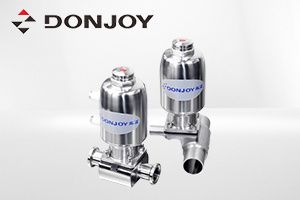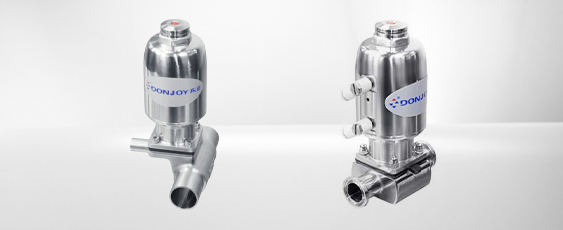 2022-03-03
2022-03-03
Safety valves are used on pressurized equipment, containers or pipelines as overpressure protection devices. When the pressure in the equipment, container or pipeline rises beyond the allowable value, the valve will automatically open and then discharge in full to prevent the pressure in the equipment, container or pipeline from continuing to rise; when the pressure drops to the specified value, the valve should Automatic and timely shutdown to protect the safe operation of equipment, vessels or pipelines.
A safety valve can be actuated directly by the system pressure at the valve inlet, in this case a mechanical load provided by a spring or weight to overcome the pressure of the medium acting under the disc. They can also be pilot actuated by a mechanism that releases or applies a closing force to open or close the safety valve. Therefore, the safety valve is classified into a direct-acting type and a pilot-operated type according to the above-mentioned driving mode.

1. Safety valve: an automatic valve. It does not rely on any external force, but uses the force of the medium itself to discharge a rated amount of fluid to prevent the pressure in the system from exceeding a predetermined safe value; when the pressure returns to normal, the valve closes again and prevents the medium from continuing to flow out.
2. Direct load safety valve: a safety valve that overcomes the force generated by the medium pressure under the disc by a direct mechanical load, such as a heavy hammer, a lever weighted hammer or a spring.
3. Safety valve with power auxiliary device: The safety valve can be opened below the normal opening pressure with the help of a power auxiliary device. Even if this auxiliary device fails, this type of safety valve still meets the standard requirements.
4. Safety valve with supplementary load: This safety valve always maintains an enhanced sealing pressure before the pressure at its inlet reaches the opening pressure. This additional force (supplementary load) can be provided by an external energy source and should be reliably released when the safety valve reaches the opening pressure. Its size should be set so that, assuming that the additional force is not released, the safety valve can still reach the rated displacement under the premise that the inlet pressure does not exceed the percentage of the opening pressure specified in the national regulations.
5. Pilot safety valve: a safety valve driven or controlled by the medium discharged from the pilot valve. The pilot valve itself shall be a direct load safety valve that meets the requirements of the standard.
6. Proportional safety valve: a safety valve that opens or closes proportionally in the entire opening height range or within a considerable opening height range.

7. Full-open safety valve: a safety valve that only opens proportionally within a small opening height range, and then suddenly opens to the fully open position. The opening height is not less than 1/4 of the diameter of the runner.
8. Micro-opening safety valve: It is a direct-acting safety valve only used for liquid medium. The opening height is within the range of 1/40 to 1/20 of the diameter of the flow channel.
9. Opening pressure (rated pressure): the inlet pressure when the safety valve disc starts to rise under operating conditions. Under this pressure, there is a measurable opening height, and the medium is in a state of continuous discharge by visual or auditory stems.
10. Discharge pressure: the inlet pressure when the valve disc reaches the specified opening height. The upper limit of discharge pressure is subject to the requirements of relevant national standards or specifications.
Why sanitary stainless steel butterfly valves corrosion resistant?